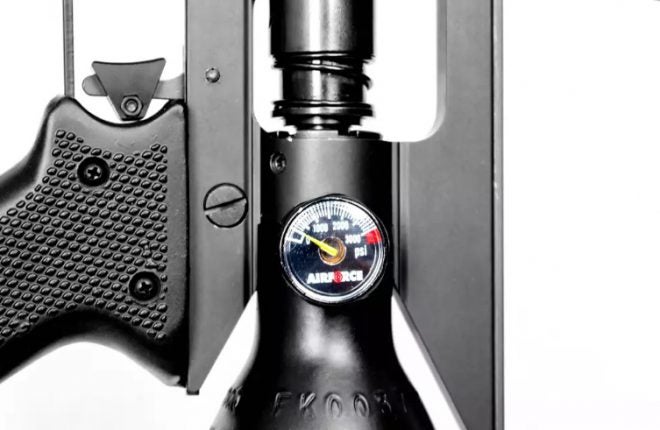Helium in an Airgun: Boost or Bust?
Kevin Crank 06.28.16

(Warning: This is opinion, not absolute fact. Be very careful with everything involving high pressures. Air tanks can turn into grenades if abused. Contact the manufacturers before attempting any experiments, and if they say not to do it, then don’t!)
Cody Reeder–Mars One Candidate–gave me a bit of inspiration to improve airgun velocities. In the video below he tests the effect of Helium in a classic airgun. He standardizes the test with a ten pump base and chronographs his pellets with and without Helium.
Around 4:32 in the video the results confirm his hypothesis: lighter gasses increase velocity.
What’s even cooler is his inclusion of a crude illustration of why helium imparts more velocity to the pellet. Basically, Helium is so light and fast, it can catch up to the pellet while it’s accelerating; normal air, in contrast, isn’t fast enough to do this. Therefor there is a bit of drop off in velocity past the initial release. Scientific LGG’s are used to send projectiles at orbital velocities to simulate the properties of meteorites or space debris that could harm spacecraft.
So why do we care? It’s just a pellet gun. Woop de doo! Well, hang on.
There are these newfangled things from companies like AirForce called the Texan. This 48″, 7+ Lbs of Aluminum and steel can handle 3000 Psi and lob 45 caliber lead at around 1000 feet per-second. I’m pretty sure if you called this a pellet gun, a few people would Gibbs-slap you up the back of your head. This is an Air Rifle.
What can we speculate would happen if one filled the Texan with Helium? I’m no scientist, so I can only do some crude calculation, but heck. Let’s figure it out.
Cody’s test resulted in an 11% increase in velocity. That’s with a hand pump and inaccurate gas mixture, but that increase would equate to 1110 feet per-second in the maximum advertised velocity. That may not seem like a lot, but let me add the above projectile data to give a little perspective.
In the video, Eric used a 350 grain cast lead bullet going 765 FPS at the muzzle (679 at 200 yards). The starting energy of that bullet would be 455 Foot pounds (Ft/Lbs). Now let’s substitute the air for helium. The velocity would go from 765 to 849 FPS. The energy imparted would go up from 455 to 560 Ft/Lbs. To put that in perspective, 45 ACP puts out 400 Ft/Lbs on average while 45 ACP P+ ammunition kicks it up to 500+ Ft/Lbs. Congratulations, we have a relatively quiet 45 ACP P+ rifle that is’t considered a firearm and needs no tax stamps! Thanks Science!